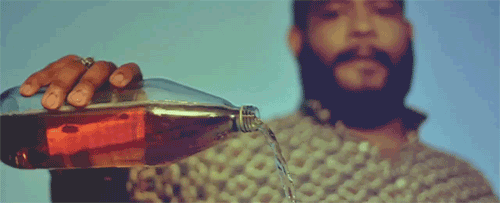Rob Sparx wrote:
There's always ppl who will misunderstand ppls advice - just likes there's those who misunderstand your advice working in the red there will probably be other ppl who do clipped mixdowns in their projects (even if a recording is peaking at <0db it can still be clipping as digital meters can miss some short peaks so worth reducing the levels a bit and watching your gain structure etc) and do their premaster recordings in the red then say thats something I recommended.
It's funny you mention intersample peaks - that's one huge disadvantage with using clipping on your output. I had one a week or two ago that was clipping at +4.2dB!! It sounded horrific, crackling badly all over the shop, brittle sounding… a mare.
BTW Macc would like to hear what you have to say about floating point format as I do all my premasters in 32bit and would like to know what the 'clipping data' the extra digit relates to actually is!
Nothing wrong with 32-bit FP, although it is kind of missing the point of running things hot (all dynamic info is retained, no clipping etc). But then looking at it the other way, it’s a handy ‘shortcut’ saving you turning it down and exporting at 24bit with headroom (all dynamic info is retained, no clipping etc). But further to
that, 24 bit is generally a safer way to deliver to an ME or some such as it takes that whole sliding scale out of the equation. What I mean here is that if it is 32-bit, peaking over 0, and the ME wants to send it to analogue, he’ll have to turn it down under zero to avoid clipping the DAC on the way out (practically all PCM convertors on the market are 24 bit).
Anyway, so on the one hand it’s sort of useful, on the other it’s sort of pointless. 24 bit is more than adequate, actually slightly superior if you want to go really deep into it.
As for the technical aspect, floating point almost literally refers to the decimal point being able to ‘float’. Consider the numbers 10000.000 and 0.0001000 – the ‘only’ difference is the placing of the decimal point. So you can describe the ‘content’ of the number, called the significand, and then the exponent makes the decimal point move about.
So essentially what you have in a 32bit float file is 24 bits of ‘content’ (23 for content, one for the sign if I remember rightly) and then 8 bits to describe the exponent, ie scaling factor. When you think about this in terms of signals in your mixer, it becomes easy to understand why things won’t actually clip when operating in a floating point environment. The floating decimal point gives rise to hundreds of dB of headroom over 0dB. *
BUT
When all is said and done you
always have to come down under 0dB to put things back into the ‘real world’. Convertors are 24 bit and there’s a ‘bit bottleneck’ at the output, which is why you still get clipping at your output, despite it being 32bit FP up to that point.
With all this in mind and with regard to this conversation: it makes more sense to me to mix the way I usually bang on about, and occasionally punch in a clipping/limiting plugin on your output set to, say +9in, -9 out. So if you’re mixing to leave about 3dB of headroom this will give you 6dB of clipping
at unity gain. Then you can hear how well your mix holds up under those conditions without being bound by it, without having it there all the time, and without the extra volume fooling you. You can switch it in and out and hear how your mix is doing, but you aren’t married to the clipping or dealing with varying volume levels. Best of both worlds – just don’t forget to turn it off

Lastly, to say it again… submitting clipped mixdowns for mastering is a number one sin in my book. Even if they seem to sound great it always always ends up sounding not as good, with that horrid ‘fizz’ coming out as corrections are made and the level gets brought back up. Often (very often) it ends up in quieter masters, not louder. There’s already so much distortion hidden away. Using clipping as a tool as described above, cool. Just turn it off when you’re done.
Man that post got out of hand, sorry!
*
It does cost slightly in terms of precision though as I understand it – it gets quite heavily into maths and it all gets a bit much for me tbh. I have to be in the mood to get into that stuff!